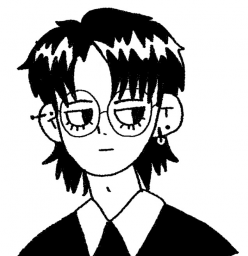Brief:
First, stick to Taylor’s specific arguments (supplemented by the Harry Potter excerpt) to identify and explain how online learning can risk reverting to The Umbridge Approach.
Then, using Taylor’s own terms, supplemented by Baynes et al. paper on being “at” UBC as a distance education student. What has been your own experience of online learning? Describe current situation in the MET program at UBC, how would one take up Taylor’s argument(s) about the “relative value” of your degree under the massification of online education?
Taylor (1996) outlines many of the pedagogical benefits and challenges of open learning, specifically under the concept of looking at borders in the context of “social resources associated with the use of educational artifacts”, especially around the focus of social conventions which are integral to such artifacts (p. 60).
One challenge was how open learning lacks social inertia which is strongly associated with authority, as the material properties that lend authority to the educational experience are stripped away by the usage of information and communication technologies (p. 68).
The physical demassification of the classroom and the social demassification of higher education in this sense means higher customizability of pedagogical practices to particular groups. However, the paradox to this would be that the social conventions and identities of “student” and “teacher” are stripped away by the adoption of open learning, which challenges authority and legitimacy of knowledge and pedagogical practices once it has moved beyond the confines of a physical institution.
Relating back to the Harry Potter excerpt per essay prompt, this can be illustrated through Prof. Umbridge’s approach to teaching the Dark Arts (Rowling, 2003).
In her class, Prof. Umbridge holds the authority and commands the classroom with her tyrannical rules. The students parrot “Yes, Prof. Umbridge” or “No, Prof. Umbridge”, which reinforces her reign and those who do not follow, or question her approach will receive negative consequences (p. 240).
Her use of the textbook “Defensive Magical Theory” also upholds the legitimacy of knowledge that is “carefully structured, theory-centered, Ministry-approved” written by “Ministry-trained educational experts” (p. 242)
This poses as a problematic reverting and overcompensation of “packaging the course into an extensive syllabus” and “strong preoccupation of what to teach rather than how to teach”. This pedagogy is limiting and leads to an overly teacher- and curriculum-centered approach that is more “closed” where both teacher and students have less space to make and influence decisions (Taylor, 1996, p. 72).
Reflecting on my current experiences in this course, I now understand what Taylor means by the “stripping away” of social conventions and social inertia in distance education, especially in the ways of interaction and collaboration with my instructor and peers.
With most of the course communication on Slack, the immediacy and ability to instantaneously contact others was a strange spatial break down in terms of the social and material interactions which take place within in. (Baynes, 2014, p. 572).
The renegotiation of professional and hierarchical boundaries renders the rapport and interaction between student and instructor rather casual and friendly. On one hand, this equalized the dimension of authority within the class, opening up the space for more student-centered co-contribution within the course. On the other hand, with the lack of facilitated discussions or peer feedback on assignments, this “inconsequential” quality of interaction permeates the learning atmosphere such that it feels quite difficult to co-create my learning experience with others, more like shouting out into the void.
I think this is an example of attempting to find equilibrium between the physical and social demassification of open education, and the renegotiation of social conventions surrounding such fluid and mobile learning environments, especially through the mediation of communication technology, reiterating the notion that “technology is neither good nor bad in itself, but it is the way that it is used that matters” (Taylor, 1996).
References:
Bayne, S., Gallagher, M. S., & Lamb, J. (2014). Being ‘at’ university: The social topologies of distance students. Higher Education, 67(5), 569-583. doi:https://doi.org/10.1007/s10734-013-9662-4
Rowling, J. K. (2003). Chapter 12 Professor Umbridge. In Harry Potter and the Order of the Phoenix. New York
Taylor, P. G. (1996). Chapter 3: Pedagogical challenges of open learning: Looking to borderline issues. Counterpoints (New York, N.Y.), 29, 59-77.
